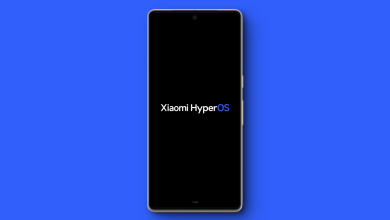How to Calibrate Your Phone’s Battery (4 Easy Methods)
Over time, a phone’s battery cell is bound to degrade, and this can lead to calibration issues. When this happens, your phone may not hold as much charge as it once did. As a result, you might notice your phone’s battery life worsening, and sometimes, this wear and tear can confuse your software’s battery indicator too.

When it comes to battery calibration, many people confuse it with “optimizing” their phone’s charging habits. However, battery calibration simply means aligning your phone’s software so that the battery percentage you see actually matches the charge held in the battery—making sure the numbers at the top of your screen reflect what’s truly going on inside the device.
You might want to calibrate your device’s battery for one or more of these reasons:
- Inaccurate Battery Percentage: The phone might display a charge level that’s too high or too low compared to the actual charge. This can cause confusing behaviors, such as dropping suddenly from 10% to 1%, or hanging on at 0% for several minutes.
- Sudden Shutdowns: If your phone powers down unexpectedly or seems to drain very slowly at low percentages, your operating system may not be reading the battery data correctly. This can cause abrupt shutdowns or unreliable battery readings.
- Improve Battery Life: Many people recalibrate their battery to stretch their phone’s screen-on time. Sometimes, after a successful calibration, users notice improvements in how long their battery lasts.
- Prevent Massive Battery Drains: Without proper calibration, your phone might show sudden drops in battery or drain too quickly, even if the actual charge is different from what’s displayed.
↪ Hardware Limitations
While software calibration is generally safe to try, it won’t solve problems caused by hardware defects. If your battery is physically worn out or damaged, recalibrating the software won’t fix the root issue. Sometimes, the problem is deeper than the operating system or even the recovery methods. Manage your expectations, and be aware that you might not always see the improvements you hope for if there’s a hardware problem.
For example, if your battery drains faster than it used to, if your phone charges more slowly, or if you’re experiencing random unexpected shutdowns, it’s very likely to be a hardware issue. Go through the steps below one by one to help figure out if your problem is with the battery itself or the software calibration.
To calibrate your phone’s battery, you can try manual calibration (by fully charging and discharging a few times), use third-party apps, or do a factory reset to reset the battery’s calibration data in the software.
1) Perform a Full Charge Cycle
Doing a full charge cycle helps your phone’s operating system relearn how to measure the battery’s charge. This can refresh the way your phone displays the battery percentage.
- Charge your phone to 100%, then leave it plugged in for a few extra minutes.
- Use your phone normally until the battery drops to 20%.
- Now, recharge your device back to 80%.
- Then, restart your phone.

This method is not guaranteed for everyone, but the principle is simple: letting your phone fully charge and then keeping it plugged in gives the software a chance to adjust and correctly detect when the battery reaches 100%. This helps the battery percentage displayed better match the actual charge.
2) Charge Beyond the Maximum-Rated Capacity
Some users online claim they’ve managed to improve their battery’s maximum capacity by recalibrating it—but these claims are usually based on what third-party apps show. Remember, you can’t increase your phone’s actual hardware capacity just through software tricks.
- Discharge your phone fully until it powers off (using things like a benchmark app or turning on the flashlight can help speed this up).
- Next, charge your phone back to 100% using a fast-charging adapter.
- Once fully charged, switch to a slower 5–10W charger and let it continue charging. This may cause the system to recalibrate by slowly trickling in extra power, helping the reading sync up better with the battery’s real status.
- Finally, check the battery capacity using mAh readings (not just the percentage in the notification bar) and compare it to what you saw before doing this process.

Manipulating your phone’s charging in these ways can come with risks. Please do this at your own discretion. Appuals is not liable for any issues that might happen as a result.
3) Use a Third-Party App
If you want to calibrate your phone’s battery with guided steps, try using third-party apps like Battery Calibration Helper or Battery Life & Health Monitor. These apps can walk you through the process step by step and may help improve your battery’s performance by making sure the readings are more accurate.
Please know that Appuals is not responsible for any privacy or security issues that could come from using these third-party apps.
4) Factory Reset Your Device
If all else fails, doing a factory reset may help. A factory reset can sometimes fix mysterious battery issues, especially if they’re caused by software bugs or an app interfering with your battery sensor. Remember to back up your important data first, as this process will erase everything on your device.





